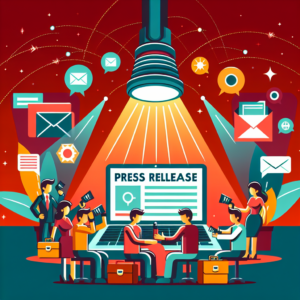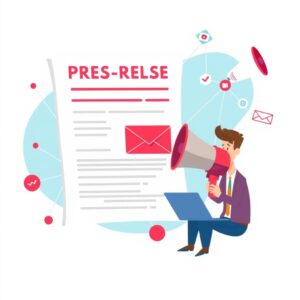How to Maximize Media Coverage for Your Event: A Step-by-Step Guide
Introduction
Are you planning an event and looking to generate buzz through media coverage? Whether it’s a product launch, charity gala, or industry conference, effective media outreach is crucial for success. In this guide, we’ll walk you through six actionable steps to secure top-tier press attention for your event. From defining your unique selling points (USPs) to crafting personalized pitches, let’s dive into how you can make a lasting impression on journalists and their audiences.
Define Your Event’s Unique Selling Points
Before reaching out to the media, it’s essential to identify what makes your event stand out.
- Why Should They Care?
Journalists are bombarded with pitches daily, so clearly articulating why your event matters will grab their attention. Highlight elements like exclusive guest speakers, innovative themes, or charitable causes tied to your event.
- Key Questions to Answer:
- What problem does your event solve?
- Who is your target audience?
- Why should people attend instead of other events?
By focusing on these USPs, you create a strong foundation for all future communication efforts.
Identify Relevant Media Outlets & Journalists
Targeting the right outlets and individuals increases your chances of securing coverage.
- Research Thoroughly
Compile a list of publications that align with your niche. For example, tech events should focus on tech blogs, while fashion shows aim for style magazines.
- Find Influential Journalists
Use tools like Muck Rack or Cision to discover journalists who frequently cover topics related to your event. Personalize your approach by reading their recent articles to understand their interests.
- Create a Contact List
Organize contacts in a spreadsheet, including names, email addresses, beats, and any notes about past interactions. This ensures no opportunity slips through the cracks.
Craft a Compelling Press Release
A well-written press release serves as your official invitation to the media.
- Structure Matters
Follow the standard inverted pyramid format: start with a catchy headline, followed by a summary paragraph, key details, quotes, and boilerplate information about your organization.
- Focus on Benefits
Instead of just listing facts, emphasize the benefits attendees and readers will gain from participating in or learning about your event.
- Include Multimedia Elements
Embed high-quality images, videos, or infographics to make your release more engaging and shareable.
Here’s a quick checklist:
- Is the tone professional yet conversational?
- Does it answer who, what, when, where, why, and how?
- Are there clear calls-to-action?
Personalize Outreach Emails
Generic emails rarely cut through the noise. Tailor each message to resonate with specific journalists.
- Start With a Genuine Greeting
Address the recipient by name and reference something they’ve written recently. For instance, “I loved your piece on sustainable fashion trends last month.”
- Keep It Concise
Your pitch should be brief but impactful—no more than three paragraphs. Summarize the event’s highlights and explain its relevance to their audience.
- End With a Call-to-Action
Invite them to cover the event, request additional information, or schedule a follow-up call. Make sure the next step is clear and easy to take.
Example Subject Line: “Exclusive Invitation: [Event Name] Perfect for Your Readers”
Follow Up Strategically
Don’t assume silence means rejection. Following up politely but persistently boosts response rates.
- Timing Is Everything
Wait at least 48 hours after sending your initial email before following up. Avoid being overly aggressive; one or two follow-ups are usually sufficient.
- Add Value in Your Follow-Up
If possible, include newsworthy updates or exclusive offers that weren’t available during the first outreach.
- Be Respectful
Acknowledge their busy schedules and express gratitude for considering your pitch. Even if they decline, maintaining a positive relationship could lead to future opportunities.
Offer Exclusive Opportunities
Providing journalists with unique access or incentives encourages them to prioritize your story.
- Behind-the-Scenes Access
Grant VIP passes or backstage tours to give them insider perspectives they can’t get elsewhere.
- Interview Opportunities
Connect them with key figures such as keynote speakers, organizers, or sponsors for insightful interviews.
- Pre-Release Content
Share embargoed content or sneak peeks ahead of the event date to build anticipation.
These exclusives not only enhance their coverage but also strengthen your partnership long-term.
Prepare a Media Kit with Key Info
A comprehensive media kit simplifies the journalist’s job and improves accuracy.
- What to Include
- Event overview and agenda
- High-resolution logos and photos
- Speaker bios and headshots
- Contact information for PR representatives
- Any relevant statistics or data
- Make It Easily Accessible
Host the media kit online via a dedicated landing page or cloud storage link. Ensure everything is downloadable and organized for convenience.
- Update Regularly
As details change, keep the media kit current to avoid confusion or outdated information.
Securing media coverage requires strategy, persistence, and creativity. By defining your event’s USPs, targeting the right journalists, and delivering compelling materials, you’ll increase visibility and attract the right audience. Ready to take the next step? Start implementing these tips today and watch your event gain traction in the media landscape. Need help refining your plan? Let us know—we’d love to assist!








